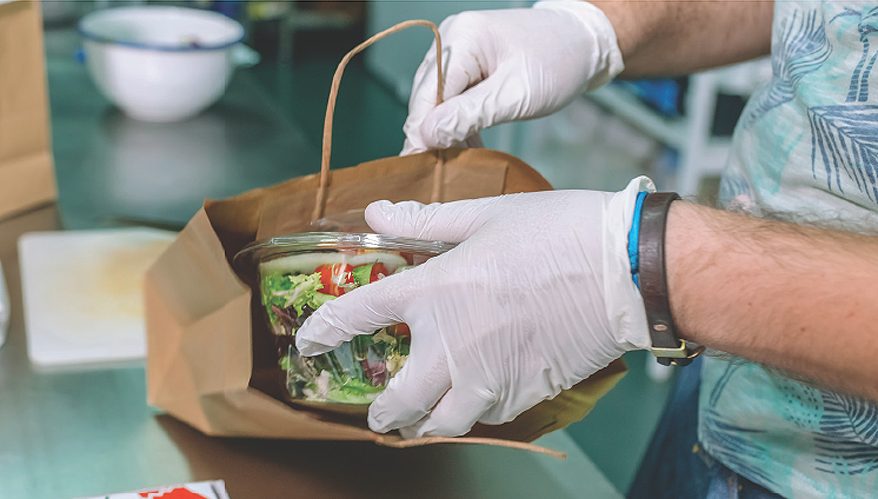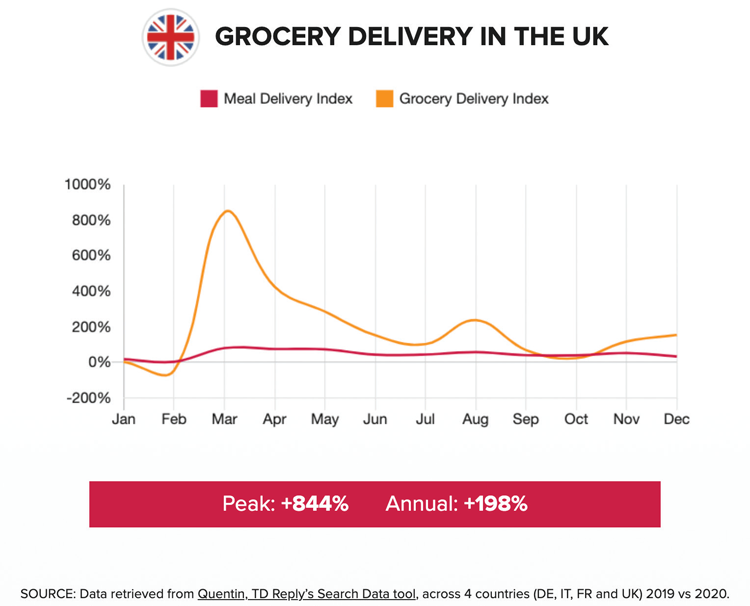
Better prepared
Lockdown life has inspired a seismic shift within the food and beverage sector, with more consumers than ever shopping online as they favor deliveries over the grocery store; takeaways instead of restaurants. But one need only read reports of the ‘celebratory’ atmosphere that hung in the air as consumers dined alfresco on the cold evening lockdown restrictions lifted to know that this past year will not be the death knell for ‘the physical’ experience.
Large swathes of society have been hit hard this past year and any optimistic note must be tempered by this sobering reminder. However, as with any period of rapid change, there is opportunity amidst the uncertainty Pre-Covid we were already talking about ‘the fourth industrial revolution’ (the ongoing automation of traditional manufacturing and industrial practices, using modern smart technology) and a period of rapid change akin to industrialization. Well, Covid-19 has only accelerated our hurtling towards this brave new dawn. The future (and increasingly the present) is digital, and for those able to embrace that fact, opportunity abounds. The road to recovery and progress starts here…
Restaurants using technology to make dining more personal
Despite that for much of the last year, the UK has been in lockdown with restaurants, pubs and bars closed, the future of the sector is bright with the industry innovating more in the past year than at almost any time in history. For example, UK consumer’s interest in how to use QR codes rose by 131 per cent over the year according to new research from Reply. People are not shying away from having to check in to every restaurant, but in fact are embracing what they need to do to return.
Interestingly, on average, 35 per cent of Europeans ordered online food take-out in Q3 of 2020, considerably less than the global figure of 56 per cent. The lower number of food delivery orders in Europe could indicate that European are more comfortable with preparing meals at home. Or it could suggest a cultural difference to the rest of the world, that food and beverage is more than just sustenance, it is also an experience that cannot be replicated at home.
In either case, restaurants need to find ways to ensure that consumers return to restaurants and keep coming back. Mass market chains have offered mobile and app-first offers, discounts, ordering and payment functionality for some time. But with Covid-19 forcing an open approach to customer service, new tech solutions could offer the way to ensure customer interest is sustained. Already, in China, 92 per cent of restaurants bars and cafes in main cities prefer mobile payments over cash. By seizing this technology, they are giving themselves an extra advantage as by embracing online payments and app use customer data becomes more available. This enable restaurants to provide a hyper-personalized experience for every individual who regular uses their services. For example, imagine having your server recommend a special that is specifically chosen for you based on past preferences – just like home cooking, without the cleaning!
Grocers personalize services and improve supply chains
This data-based hyper personalization can also be used in the grocery sector providing a bespoke and unique shopping experience to each customer, such as offering deals based on their usual shopping habits or showing suggestions for alternate brands that they might like to try on their weekly food shop.

This is more important than ever as according to the same Reply research, there was an 844 per cent increase in interest in online grocery deliveries in the UK last year. With leading supermarkets across the UK taking on more staff at the start of the pandemic to deal with online orders, this interest clearly turned into action as customers changed their behaviors in order to stay safe. This greater focus on delivering great customer service online was inevitable in the long term but the pandemic acted as a catalyst to bring it to the top of the agenda ahead of its time.
One of the main issues that grocery companies faced was that of logistics, with stockpiling and just-in-time supply chains meaning that shortages blighted the shelves of nearly every food shop in the country. Through the improvement of digital logistics in the backend, companies can now have more control over end-to-end customer experiences and ensure that supply chains continue to operate to get people the supplies they need.
One of the solutions here is the harnessing of data, whether that is how frequently fresh fruit needs to be restocked or calculating that for example, as so many people have stockpiled toilet paper the supply can be slowed down as demand will fall. Embracing the data available following the rise in online grocery shopping can then contribute to new revenue streams and customer loyalty, allowing food retailers to continue to survive and thrive better than pre-pandemic.
Making the most of publicly available data
Any fears that this will be an extensive and expensive solution for retailers to invest can be put aside, as retailers, brands and restaurateurs can benefit from digital tools and data even without building elaborate back-end systems. For example, external services such as Google Maps, Facebook or TripAdvisor contain large amounts of geo-specific data with high information value that can directly contribute to increasing business success.
These services can be used to optimize the range of goods available locally, to maximize the effect of in-store and geo-marketing campaigns or to identify profitable locations for store openings. The availability of this digital data has increased significantly due to the pandemic. This is partly due to the growing popularity of delivery services and e-commerce platforms, but also to the digitalization of physical customer contacts through online reservation systems, contactless payment or digital menus. These learnings to improve business would not have been possible a year ago, but now with this data companies can achieve a sustainable and competitive advantage.
The future of the food and beverage sector is anything but bleak. The technology that has become available and that providers have had to embrace to survive this period, has meant that they are more robust than ever before. Whatever may come over the next months, whether that is more lockdowns, or a steady reopening as planned, the food and beverage sector will come out the other side stronger and better prepared for the digital future.
Reply
Heiner von Brachel is a Senior Manager Communities of Practice, at Reply. Reply specializes in the design and implementation of solutions based on new communication channels and digital media and offers a network of companies working across sectors and technologies including AI, big data, cloud computing, digital media, the Internet of Things, among many others.
For further information, please visit: www.reply.com